This is one in a series of posts on the Fujifilm GFX 100. You should be able to find all the posts about that camera in the Category List on the right sidebar, below the Articles widget. There’s a drop-down menu there that you can use to get to all the posts in this series; just look for “GFX 100”.
I still don’t have my GFX 100 yet. My dealer has received no cameras at all. I’m first on the list, by dint of ordering a year or so ago, when the camera didn’t have a name or a price, but he can’t ship if he can’t get the gear. RSN? He’s hopeful.
In the meantime, through the kindness of Lloyd Chambers, I have ISO-series dark frames at 1/1000 second with both 14 and 16 bit precision, and using EFCS and electronic shutter (ES). That’s enough for me to determine the engineering dynamic range (EDR) of the camera.
Without further ado, here are the ES plots. Explanation follows.
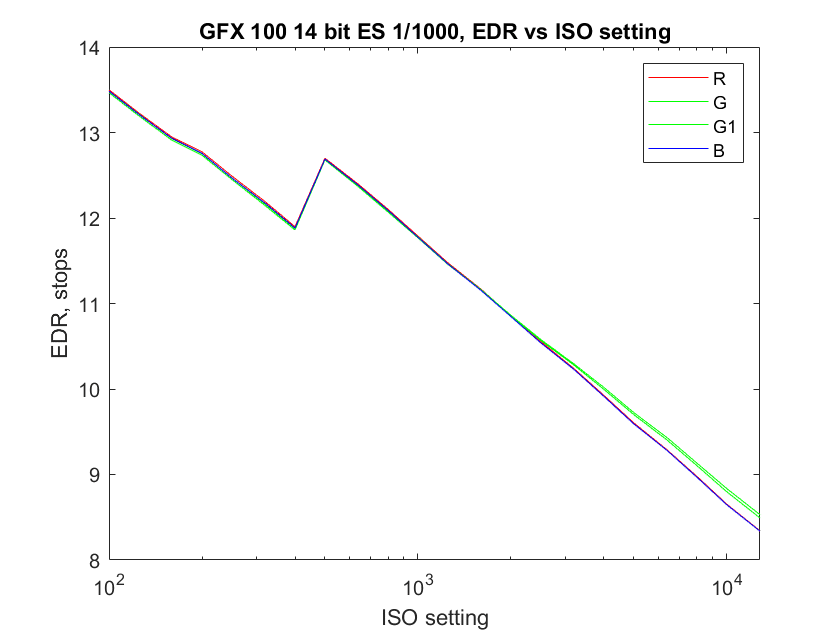
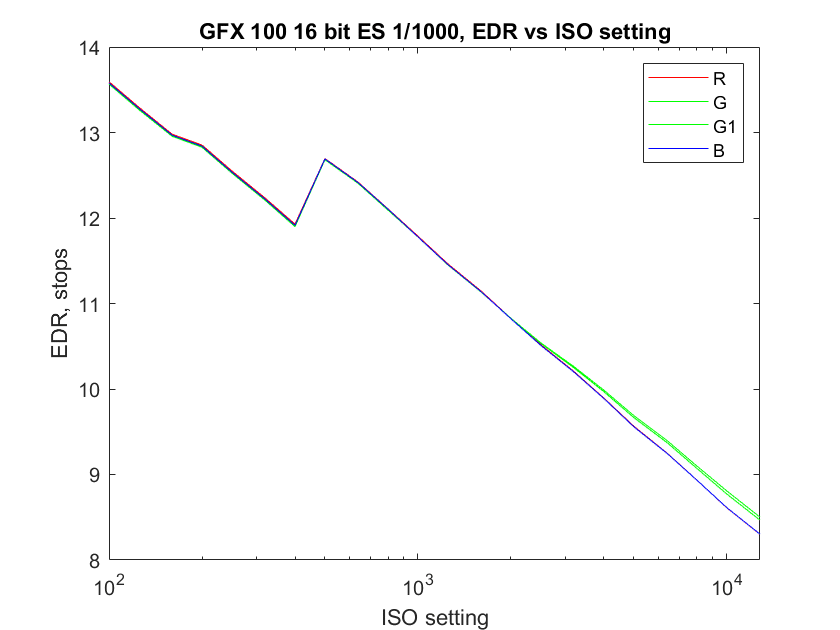
These are from the full frame, not the crops that I usually do, and they look a little worse than they would if they were cropped. The presence of the Aptina-DRPix technology is evident: that’s what causes the jump at the transition from ISO 400 to ISO 500. All four raw channels have the same DR until the ISO gets quite high, at which point the green channels do a little better than the red and the blue. There’s a funny kink in the curve at the transition to ISO 200. The black point also changes at this transition.
Now with EFCS:
Let’s compare 14 and 16 bit precision:
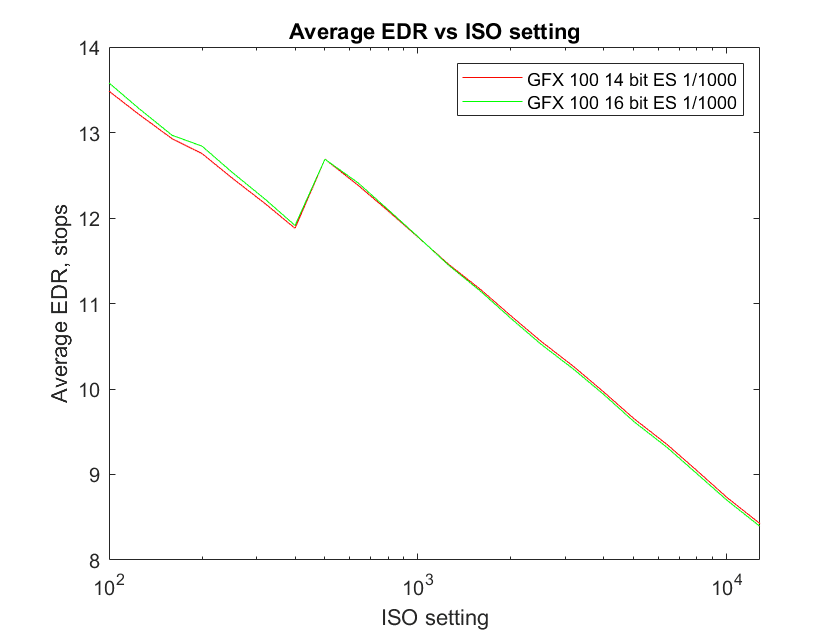
16 bit precision afford slightly more DR at low ISOs. Probably not too significant, but it might be useful. 16 bit precision causes the electronic shutter to scan more slowly, though.
Is there any penalty or gain in DR for using ES?
No, there is not.
[Note. The GFX 100 changes its black point with ISO setting as well as precision. I took that into account when calculating the curves above.]
Added 7/29/2019:
My tests with Lloyd’s files put the point at which the conversion gain increases at the transition from ISO 400 to ISO 500. That’s different than what BIll Claff as measured. Bill asked me if I was sure, so I went back and took another look, this time not using my Matlab code, which in turn uses libraw, but looking at the files with RawDigger.
Here are full frame ISO 400 and ISO 500 histograms of the dark frames for the 14-bit ES exposures (or, if you prefer, non-exposures):
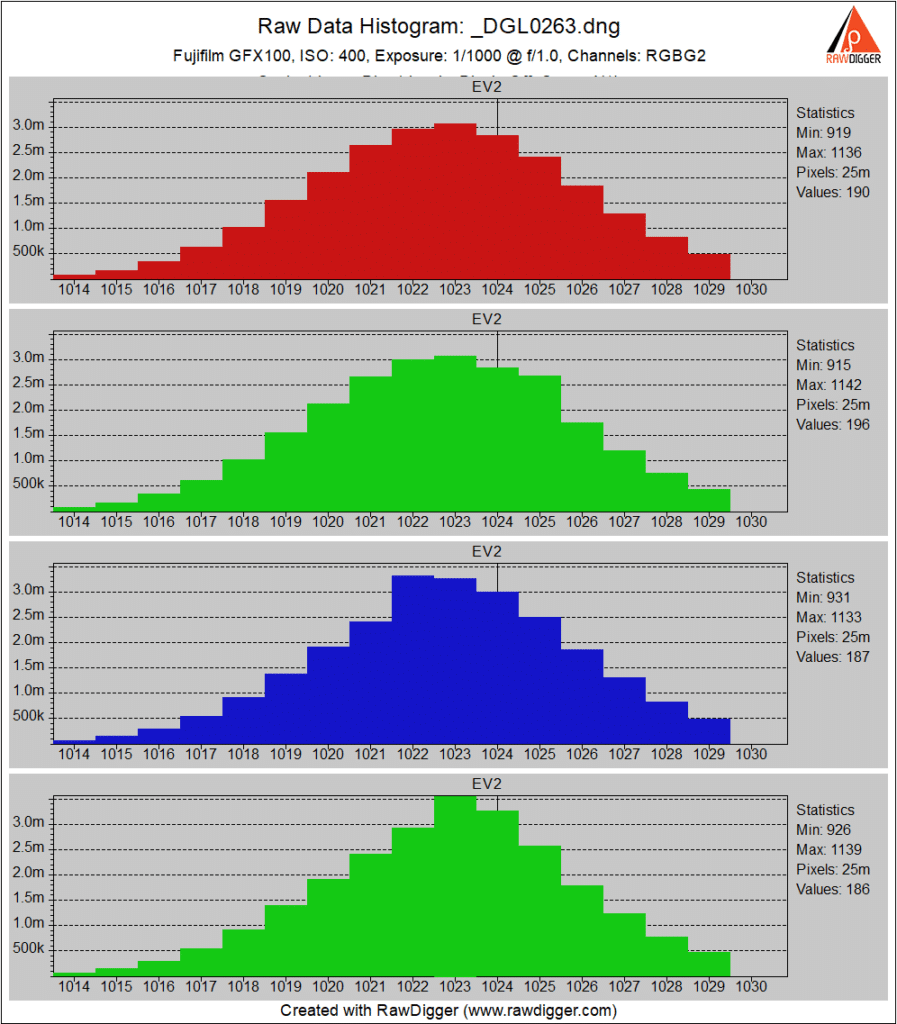
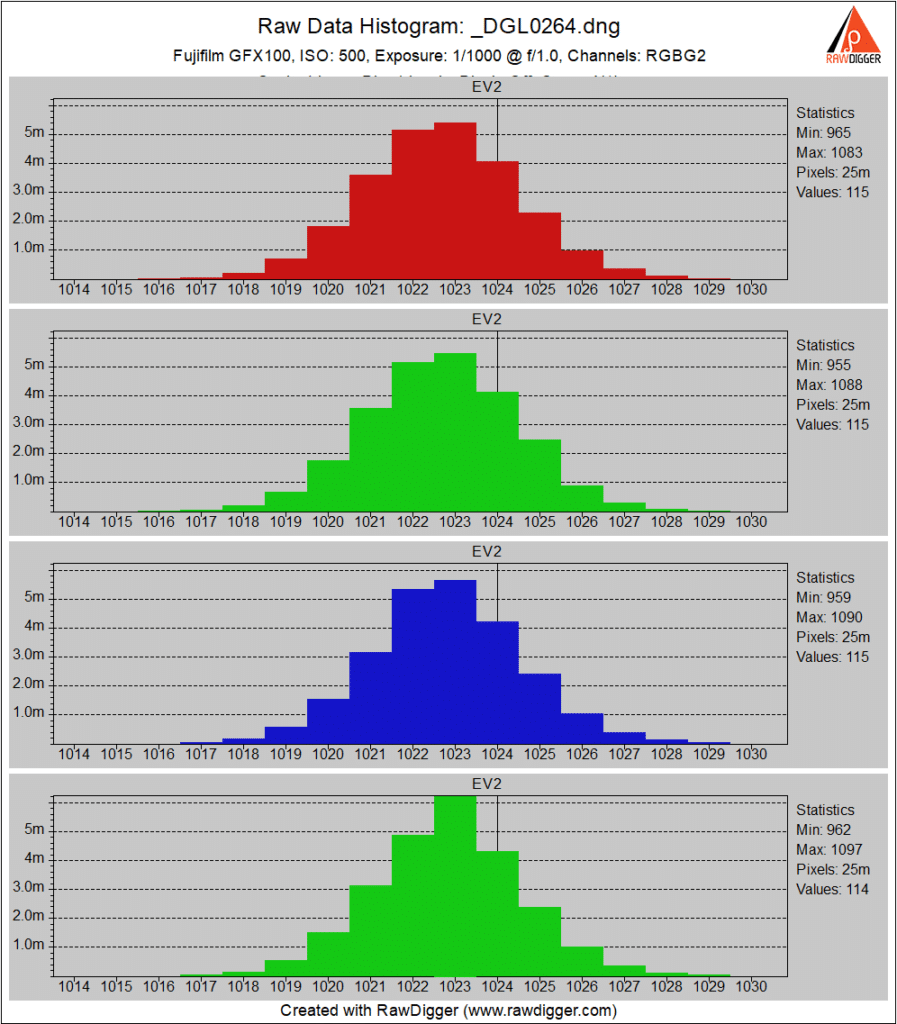
You can see that the noise is substantially less at ISO 500. These are full-frame histograms instead of the cropped ones that I used for the Matlab/libraw analyses that produced the graphs above.
Bill’s testing of the IMX 411-based Phase One IQ4 150 MP showed the transition as taking place at the ISO 400/ISO 500 boundary. The pixel pitch of the IMX 461 used in the GFX 100 and the IMX 411 are the same, and they are of the same generation. Therefore, it would be reasonable to expect the two sensors to change conversion gain at the same point. I had been assuming the pixel-level designs of those two sensor were very similar, if not identical, so the discrepancy has been bothering me, so it’s comforting to see the results in this post. My guess is that the 3.76 um pitch sensor in the a7RIV will switch conversion gain at the same place.
Here’s a normalized shadow SNR plot with Bill’s and my RN data in 14-bit mode on the GFX 100 with an assumed full well capacity of 47000 electrons.
The difference in the read noise is visible far below full scale, and makes about a 0.2 stop difference in the computed Claff Photographic Dynamic Range, which is indicated by the horizontal black line. When I get my camera, I’ll do some 600×600 crops, which should give results more similar to what Bill measured.
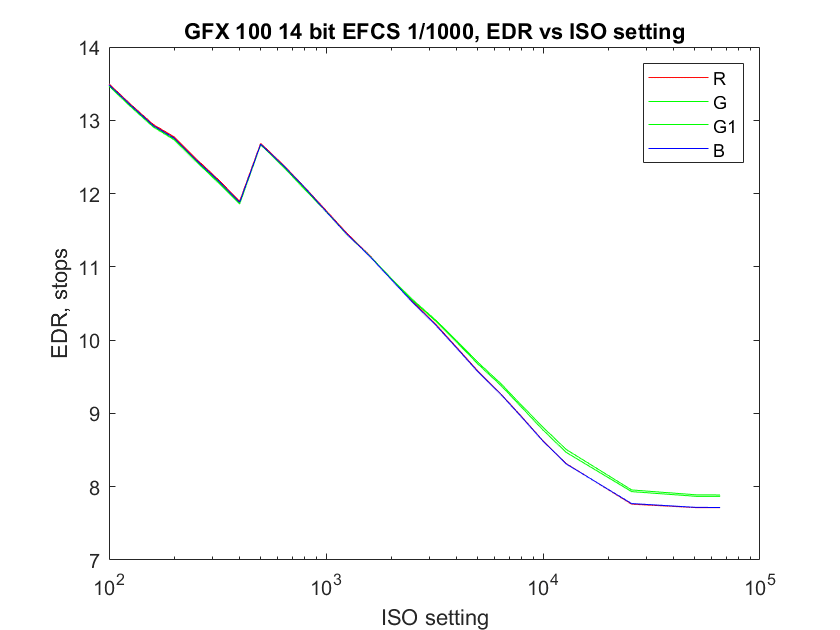
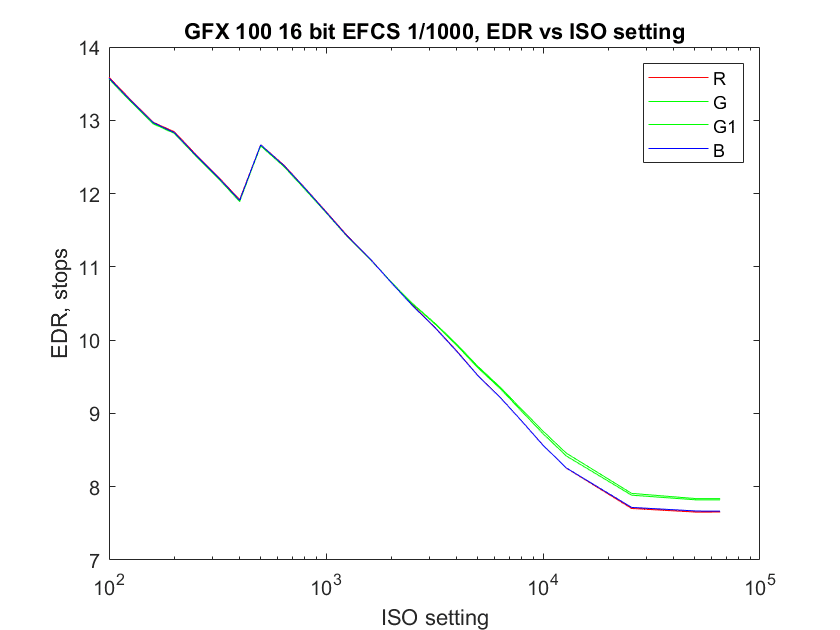
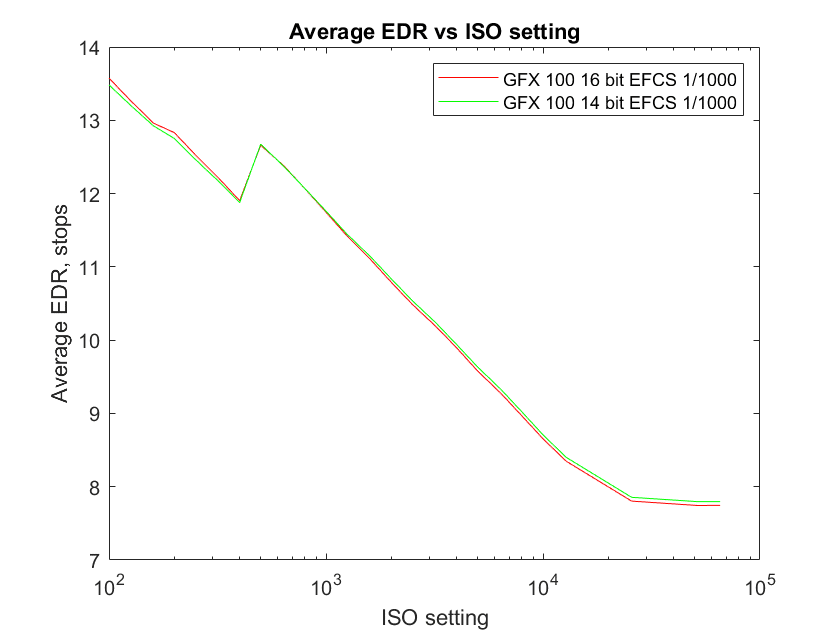
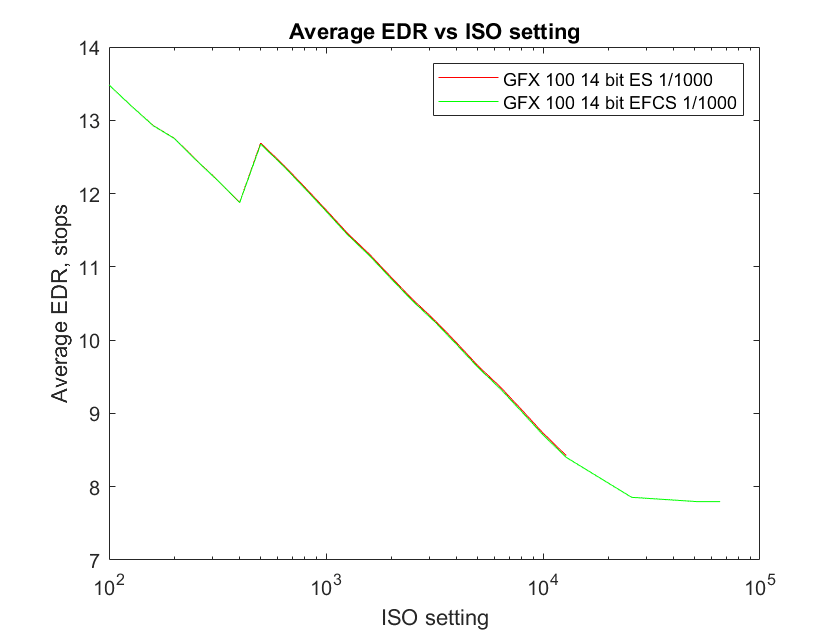
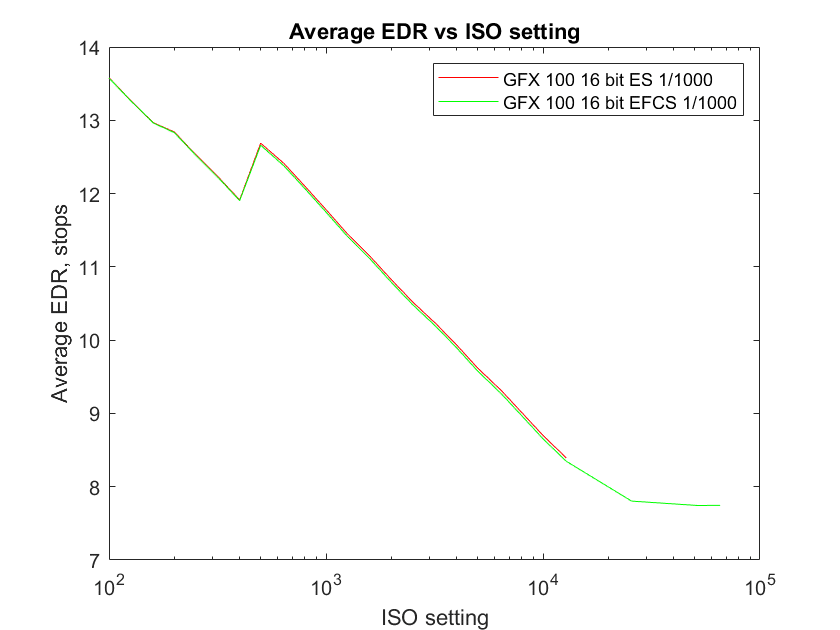
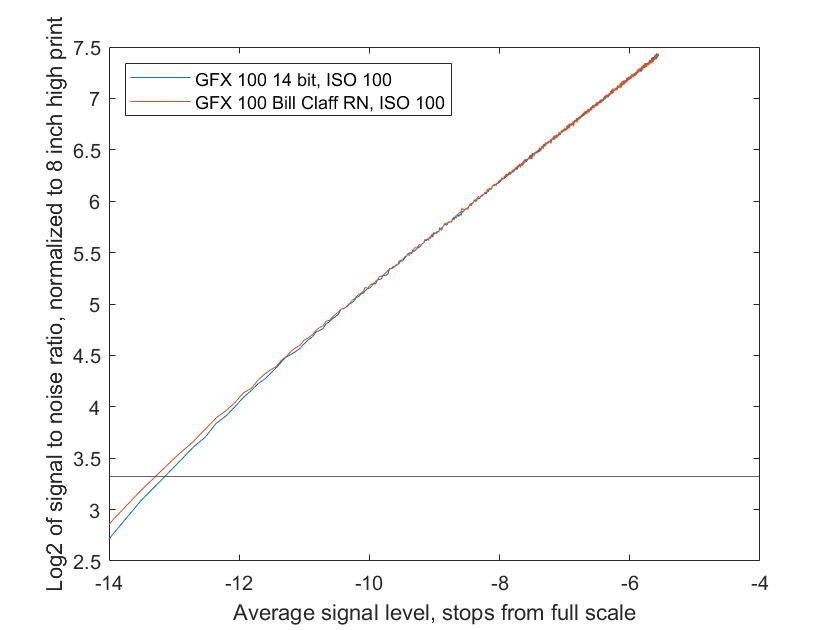
Seems like the engineers did the research before releasing the camera. Not sure why the spike in the curve at just over 200 iso as you indicated. My guess would be that is the point where the sensor needs the most correction from the floor iso.
Hi Jim,
do you have any idea why the Bill Claff ‘s measurements show the dual conversion gain jump between ISO 640 and 800 (http://www.photonstophotos.net/Charts/PDR.htm#FujiFilm%20GFX%20100) , while your measurements locate it between ISO 400 and 500?
None at all. When I get my camera, I’ll retest.
It appears that Fuji made some changes between late beta and early production firmware.
I have worked with Bill to help him update his charts by providing current sample sets. His updated PDR chart now also show the DCG ISO level at 500.
Hello! I use 16 bit TIFF in camera and I generally shoot at ISO 400. Should I shoot at ISO 500 instead of ISO400 to getter better dynamic range? The other question is why GFX100 gives %400 dynamic range option at ISO400 in camera instead of at ISO100 because it has best dynamic at base ISO? I can cover my highlights in camera very good when I choose ISO400 and %400 dynamic range in camera.
I don’t think the DR options in the camera affect the raw files at all, but just the metering. But I’ve never used them, so I don’t really know.
Not sure what you mean about 16-bit TIFF in camera. Do you mean 16-bit raw precision? I think the only kind of TIFFs the camera writes are the RAF files.
Hello. I mean in camera raw converter. You can get 16bit Tiff via in camera converter.
I see. Never tried that.